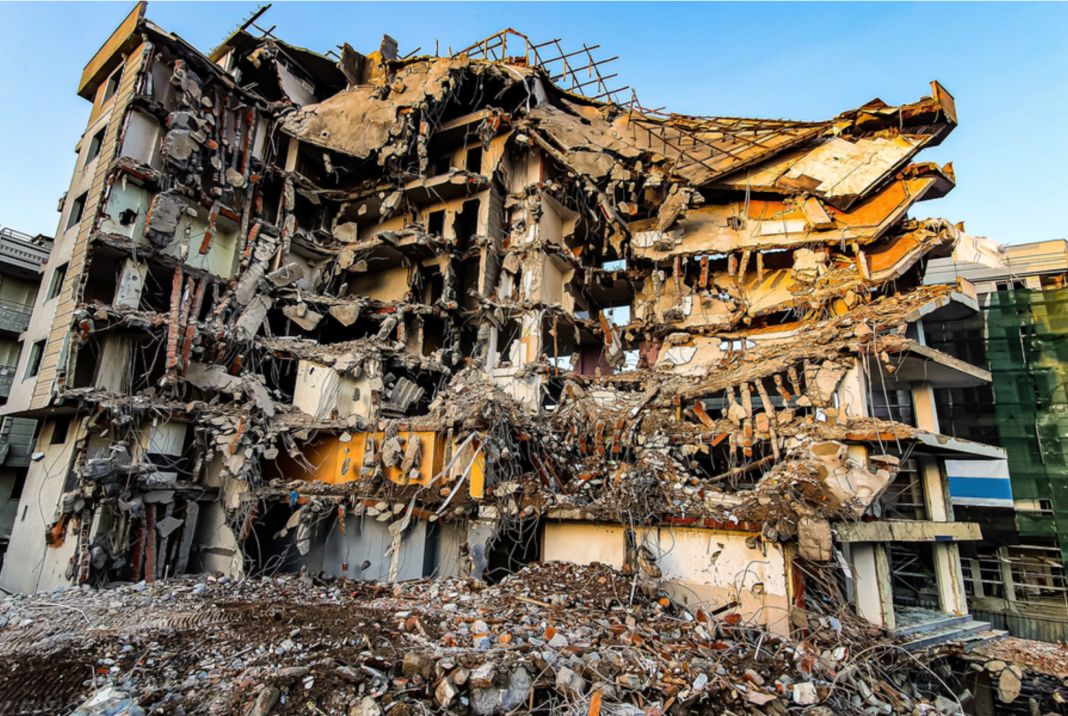« The epicenter of last week’s horrific 7.8 and 7.5 magnitude sequential earthquakes that have hit Turkey and Syria this month, is located at the triple junction of the Dead Sea transform, the African and Arabian plates, and the Arabian and Anatolian plates — superseding seismology and geopolitics. » Gilles Kepel’s analysis in Al-Monitor, on February 15, 2023.
Since the beginning of recorded history, the area has been struck by devastating temblors roughly every 150 years. Two were especially infamous. On Dec. 12, 115 CE, a magnitude 7.5 quake killed at least 250,000 people in Antioch — modern-day Antakya, or Hatay. The city was crowded because Roman emperor Trajan and his successor Hadrian were wintering there, during their military campaign against the Parthians of Mesopotamia (today’s Iraq).
In late May 526, another 7.0 magnitude quake destroyed Antakya for good — it had been the second-biggest Byzantine city, after Constantinople — with an estimated 250,000 casualties again. The region fell into lawlessness, as fleeing inhabitants were robbed and killed.
Such a dire historical setting says volumes to put the present disaster into perspective. In the past two weeks, foreign rescue teams had to be relocated because of insecurity, even on the Turkish side of the threefold border with the government of Syrian President Bashar al-Assad and jihadi groups in the Idlib province. Little foreign aid went into Idlib because of the danger to rescuers. The exception was a convoy of trucks labeled “Qatari aid,” as the gas-rich emirate has been an all-out patron of militant Islamists of all persuasions.
In Assad-controlled Syria, some French and Italian aid for the desperate populations of Aleppo and the coastal area transited through Lebanon through local NGOs and some Christian charities so as not to infringe on international sanctions against the Damascus regime. Algerian and Palestinian rescue teams, a token of Russian-inclined Arab nationalist solidarity, also showed up, while Assad and his wife Asma made a rare visit to Aleppo, currently under Russian control on the ground and the skies.
Most financial and material aid actually came from Abu Dhabi. The oil-rich emirate is using its financial clout to alleviate Assad’s political and military dependency on his Russian and Iranian patrons and bring it back incrementally into an Arab fold. Syria, despite its present weakness, remains the keystone of the New Levant thanks to its geopolitical position between Turkey, Israel, Iran and the Arab lands. Even wider, Russian control of Syrian skies keeps Iranian planes, drones and missiles at bay from the Jewish state. Hence, Israeli Prime Minister Benjamin Netanyahu has been limited in his aid to Ukraine, in spite of the pressure of Israelis of Ukrainian origin, for fear of Vladimir Putin’s retaliation.
By the same token, Turkish President Recep Tayyip Erdogan’s dependence on Russian oil and the money of Western-sanctioned oligarchs sheltered on Turkish shores, made him amenable to a reconciliation process with former arch-enemy Assad. Turkish and Syrian intelligence chiefs and foreign ministers have already met, and the process might be accelerated by the political fragility in the earthquake’s aftermath.
The Turkish president came to power in 2002 partly due to the 1999 quake in Izmit, an industrial area close to Istanbul, which claimed 17,000 dead and was not well managed by the military-secularist government of those days. Now he faces elections in the coming months in the direst of situations. Being brought to power by the former quake, he might well be ousted by the 2023 temblor.
The arch-resilient political animal is facing an economic crisis which was the sequel of his fast cash policies, distributing credit lavishly to his retinue of upwardly mobile Islamist AKP capitalist class, many of them developers. The enchanting Turkish landscape of old was transformed during the two Erdogan-led decades into a modern, if hideous, skyline ripe with bridges, highways, high-rises painted in cheap neo-Ottoman pinkish to greenish shades — all devastated by the recent quakes.
The temblors also revealed the wobbly bedrock of the AKP economic model, epitomized in the jailed or fleeing developers who offered bribes to the ruling party in order to build below seismic standards. As if that weren’t enough, Erdogan’s Syrian policy, which included welcoming close to 4.5 million refugees (5% of Turkish population) is coming home to roost. Syrian refugees have become a political liability for the ultranationalist and xenophobic constituency of his allied MHP party — all the more so as Turkish voters who lost their homes in the earthquake would rather use the refugee camps where many Syrians have been living for years. That is a terrible humanitarian issue, and also a major political risk for the whole region, with shock waves of new migration towards Europe.
Whether Erdogan is willing to use that threat to blackmail the EU as he did in the past, or whether the Turkey of tomorrow will make its peace with NATO and Europe, will lay the ground for the post-2023 resurrection of the New Levant.
Al-Monitor, February 15, 2023, by Gilles Kepes.

